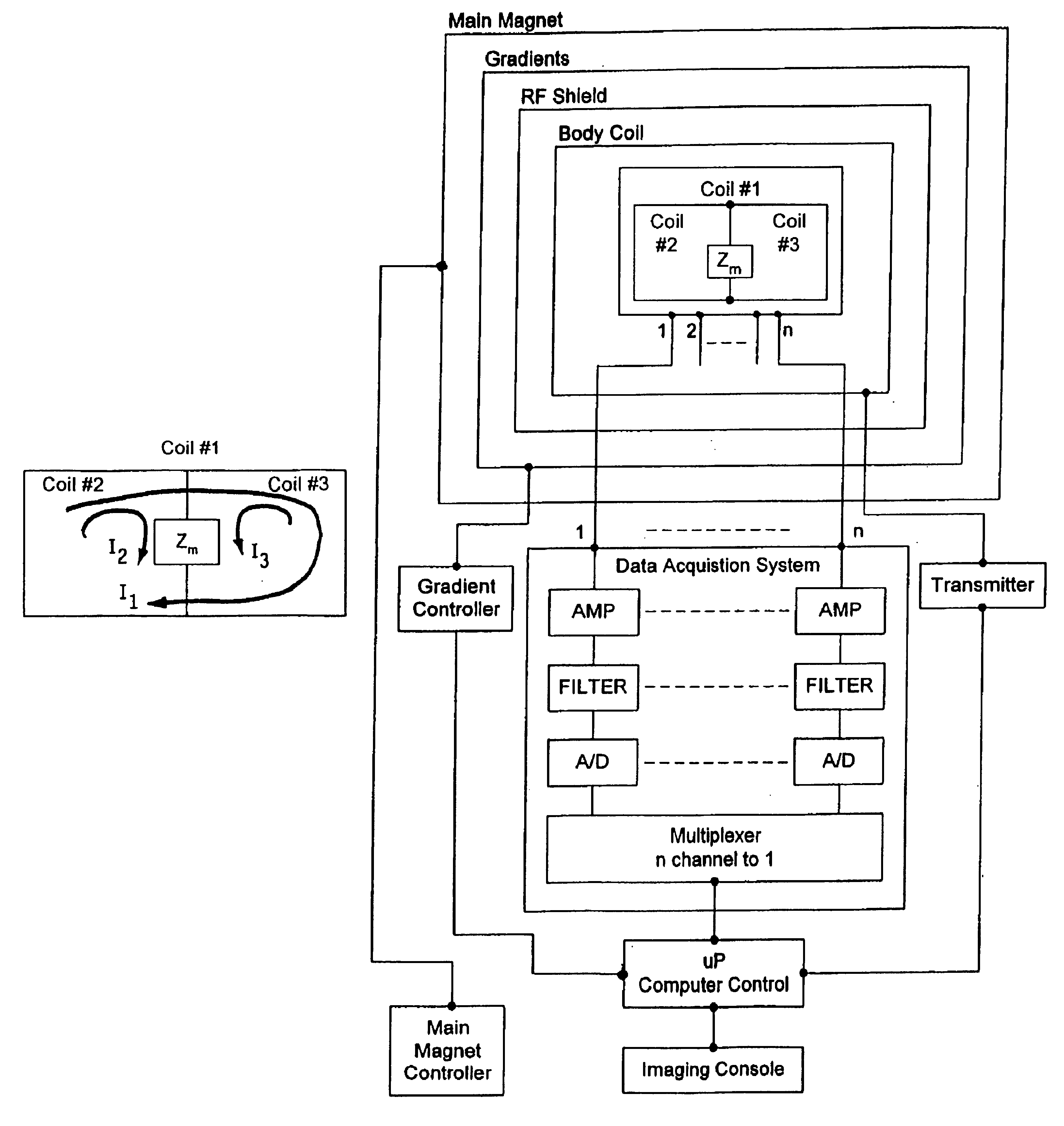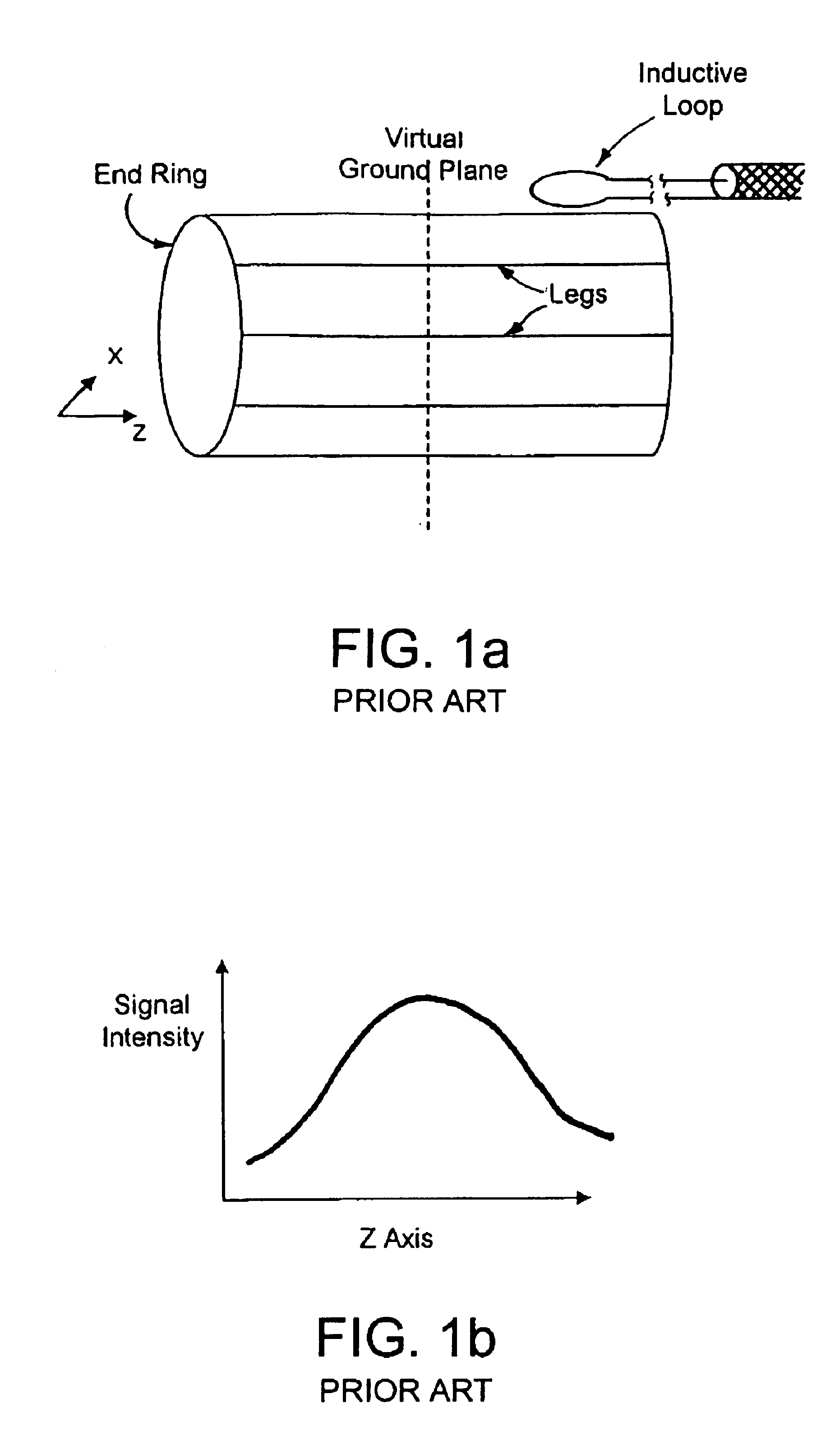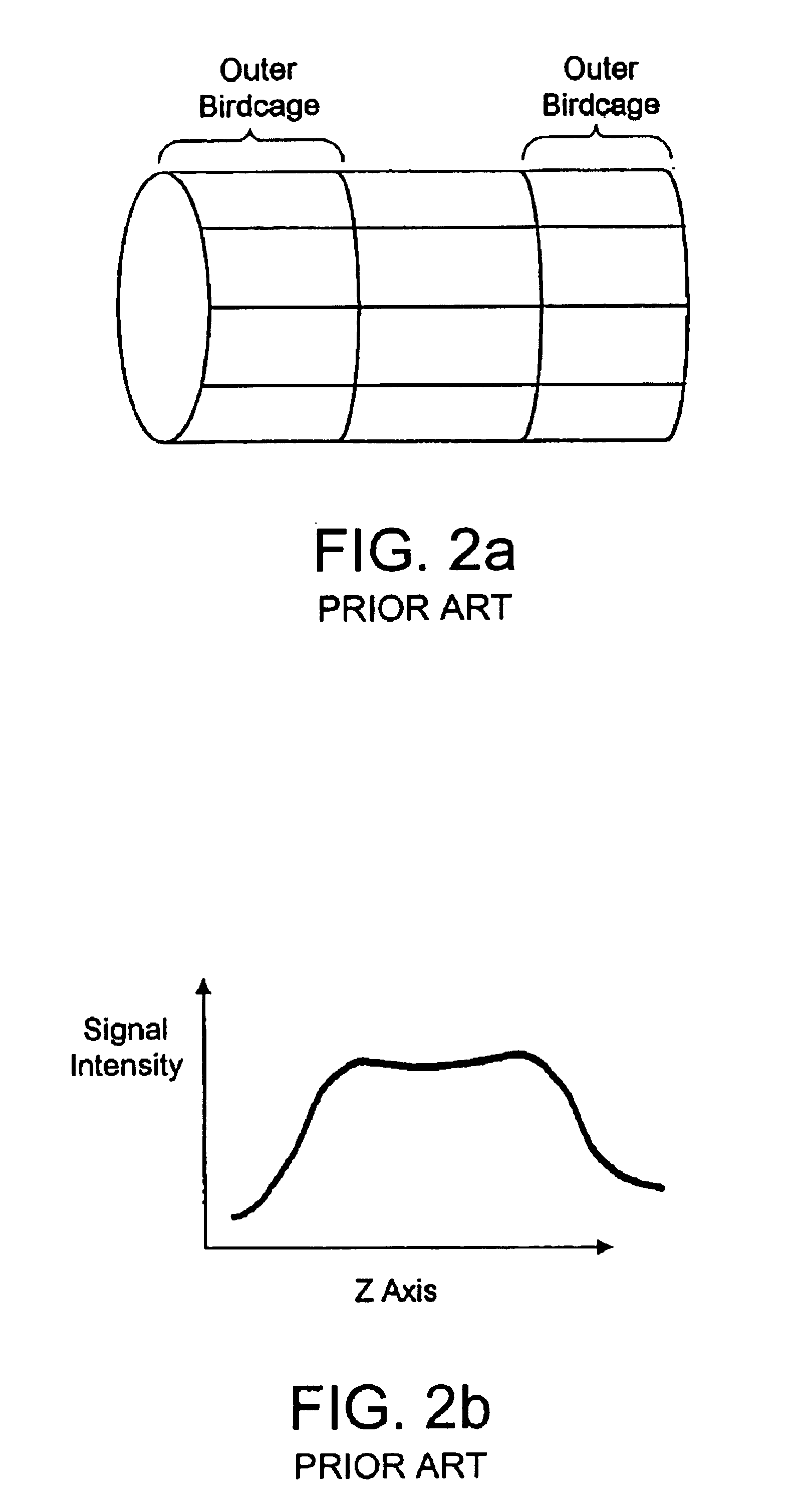Radio-frequency coil array for resonance imaging analysis
a radio-frequency coil array and resonance imaging technology, applied in the field of resonance systems, can solve the problems of unable to satisfy the critical coupling of orthogonal modes in neighboring coils, and arduous process
- Summary
- Abstract
- Description
- Claims
- Application Information
AI Technical Summary
Benefits of technology
Problems solved by technology
Method used
Image
Examples
second embodiment
A second embodiment is wherein the longer birdcage #1 is driven in the conventional manner using capacitive or inductive coupling (similar to that of FIG. 1a) and the combined coils #2& #3 are driven in the middle, across C3 in ring #3. See FIG. 7a. Driving the combined coil #2& #3 in the above manner generates a RF gradient mode along the coil axis (in this case along the Z axis) which could also be used to image. Note, the Z RF gradient mode is in quadrature. That is, there exists two linear Z RF gradient modes orthogonal to one another.
One such combination of driving the long birdcage with a rectangular loop and the combined coils #2& #3 with a FIG. 8 style loop is shown in FIG. 7b. Again note, two such combinations are needed to drive all four modes of the array (2 homogeneous, 2 RF gradient modes).
From FIG. 7c, the homogeneous mode (of longer birdcage #1) along with the Z RF gradient mode (of the combined birdcages #2, #3) provide a high S / N and highly uniform B field profile a...
third embodiment
With reference to FIG. 8a, two short coils #2& #3 that are electrically connected to one another are driven using inductive coupling loops and their outputs interfaced to separate channels of the receiver system (not shown). Alternatively, capacitive coupling similar to that of Roemer (U.S. Pat. No. 4,887,039) can be used. Note, the two short coils #2& #3 are tuned to the NMR frequency using C1 and C3. The value of C3 is chosen so as to cancel the net mutual coupling between the two stubby birdcages (#2, #3). B field cartoons along the coil axis are shown in FIG. 8b for the individual stubby coils and their combination.
Other Embodiments
Generally, the inventive aspects of FIG. 5 are applicable to all volume coil designs (TEM, solenoid, alderman-grant, counter-rotating coil pair etc.). See for example, FIGS. 13-15, which are extensions of the principles to the solenoid, Alderman-Grant and TEM designs, respectively. Irrespective of the design, the coils in an array can be operated in t...
PUM
 Login to View More
Login to View More Abstract
Description
Claims
Application Information
 Login to View More
Login to View More - R&D
- Intellectual Property
- Life Sciences
- Materials
- Tech Scout
- Unparalleled Data Quality
- Higher Quality Content
- 60% Fewer Hallucinations
Browse by: Latest US Patents, China's latest patents, Technical Efficacy Thesaurus, Application Domain, Technology Topic, Popular Technical Reports.
© 2025 PatSnap. All rights reserved.Legal|Privacy policy|Modern Slavery Act Transparency Statement|Sitemap|About US| Contact US: help@patsnap.com



